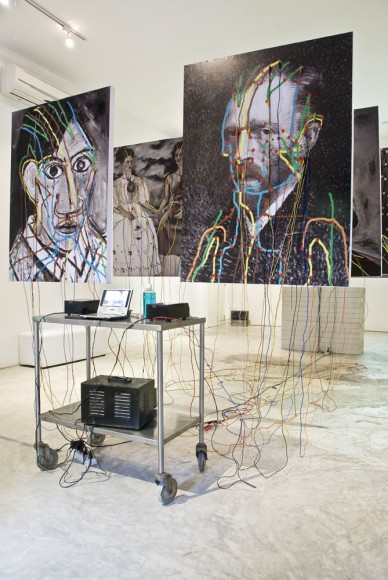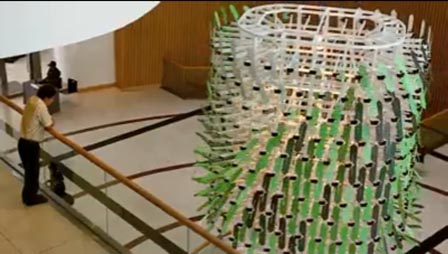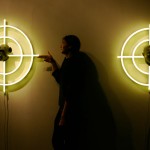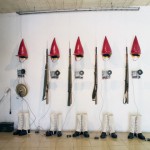
by Tunyaporn Hongtong
They say the boundary between art and psychosis is a very thin line. Sometimes, the line is so thin that it starts to blur and enables both artists and psychopaths to traffic unhindered.


by Simon Soon
Paiman’s drawing installation begins with the discipline of a daily exercise, routinely selecting a verbatim from a published mainstream media source that would best represent the political development of the day. He then types them on the entry page of the appropriate date from an Islamic diary and pairs them with a doodle of his mutant comic figures that are largely devoid of any political commentary.

by Eva McGovern
I was forwarded this link to a new work by Thai artist Wit Pimkanchanapong and Duckunit studio. I was so hypnotised by it that I had to share it with you all. It’s called My-ya-rab which is a type of sensitive plant or Mimosa in Thai and is a large scale kinetic sculpture currently installed at Bangkok Art & Cultural centre.

by Tunyaporn Hongtong
It has come to a point where I’m not sure if this exhibition is recognised solely as a platform for promoting the works of new Thai artists or that there’s an expectation that these artists would soon join the ranks of their predecessors to become the hot new thing in Thailand’s contemporary art scene. After all, the exhibtion is known to be a launch pad for the career of some of Thailand’s most well-known contemporary artists (Arin Roongjang, Porntaweesak Rimsakul, Yuree Kensakoo etc.). Reflecting on this, I reckon it does work both ways. And actually… why waste time doubting it anyway? It’s a good art project when you get right down to it.

by Simon Soon
On view now in Cemeti Art House, Jogjakarta, is Eko Nugroho’s spell-binding foray into the world of wayang (shadow puppetry), exploring a centuries-old performance medium that functions both as popular entertainment and as a form of culturally sacrosanct art in his ever expanding body of experimentation with different representational formats.

by Zedeck Siew
Behind Australian ape-lover Lisa Roet’s recent In-Sight exhibition are worthy sentiments: generally, that the environment is in bad shape; more specifically, that our simian kin are almost all endangered because of human activity. If you see Roet’s ten orangutan portraits – each sketching a different individual ape that she worked with in the 15 years of her enthusiasm – and are then persuaded to donate to the WWF, that’s cool. Perhaps the works have served their purpose.

by Simon Soon
Lining up against the entrance corridor into the main exhibition space at Cemeti Art House, Yogyakarta, last December is an armed unit of five invisible standing figures, suggested through a skeletal furnishing of their martial disposition by the uniformity of their red helmets, strapped-on rifles and firmly planted boots. They allude to the ‘Lombok Chilli’, royal guards of the Yogya Sultanate who still plays a ceremonial role today, that protects, above all, a distinct sense of pride in the Javanese identity they represent.